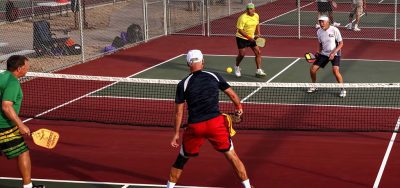All photos by David Doobinin
Meet the father-son artisans hand-crafting furniture from a bygone era
When the Winged Foot Golf Club needed custom-made timeless Windsor chairs, it turned to a couple of Italians in Gowanus
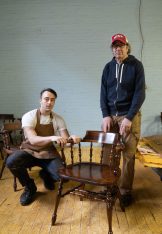

The chairmen: Justinian (left) and Angelo Montaperto
When the Winged Foot Golf Club, one of the most elite private clubs in the country, needed to replace 90 solid walnut Windsor chairs, it did not contract some antique dealer or artisan in England. Which would have been the logical thing to do: The very name “Windsor” evokes the English town where the chair originated around the early eighteenth century. Instead, the Winged Foot turned to a father-and-son team in a second-floor studio in Gowanus.
Montaperto Studios is a third-generation furniture gallery and restoration studio on 18th Street, specializing in historical design. Run by Brooklynites Angelo and Justinian Montaperto, the studio was started by Angelo’s father Giuseppe, in Florence, Italy, at the end of World War II, when he was tasked with helping to restore the Palazzo Pucci in the historic city center.
The Winged Foot Golf Club in Mamaroneck is about as far as you can get from 1940s Florence—or, for that matter, Brooklyn, where the Montapertos have been based since 2008. Membership at the at club is strictly invitation only, and the waiting list is over a decade long; initiation fees starts at $150,000. Initially the chairs were to be delivered for the 2020 U.S. Open, but the virus forced a change of plans, just as it did for the rest of the world. Still, the Montapertos saw the gig though. The team delivered 30 chairs in September for placement in the club’s Grille room. The remaining 60 were delivered in April as the club reached full capacity.
“Although we don’t typically accept custom commissions, especially ones this large, our unique skillset gained through restoration and intimate knowledge of antique techniques, hand-polishing, and reverse-engineering, made us the perfect candidate for the work,” Justinian Montaperto tells Brooklyn Magazine. “The club had dealt with several other custom furniture companies who had failed to deliver the chair to spec and in the spirit of a true antique handmade piece of furniture.”
The mandate was a daunting one: There were no extant drawings, so they had to use a single existing chair from the club to create the prototype. It was an involved project, as Montaperto describes it, one that has challenged both himself and his father artisans.
Here in his own words, edited for flow, Justinian Montaperto describes the project, with photos by David Doobinin.
On Windsor chairs
Historically, Windsor chairs evolved from rustic stick-furniture, archaic formations consisting of a green (not cured) softwood seat or top with round mortices drilled, [into which] riven, dried legs are driven with force. Over time the seat dries and the holes tighten around the legs. It takes advantage of the shrinkage inherent in curing wood to form strong joinery. These pieces became more evolved technically over centuries and folks formed different variations and provincial styles, becoming what we know today as the broad descriptive term of Windsor chair.
Eventually the shrinkage approach to joining was replaced by more predictable systems such as a reamed mortice—tapered fit, which wedges tightly into a tapered mortice—and wedged round tenons, where a slot is cut in top of cylindrical tenon and corresponding wedge is driven from the top preventing loosening. This particular shape is known as a captain’s chair—as in a lighthouse captain, or smoker’s bow. This model with the full arm-bow—round back/arm assembly—and high crown, or backrest, is designed for comfortable long bouts of sitting, socializing, and may be considered one of the more involved and luxurious forms the Windsor takes—as opposed to a comb-back, sack-back, etc.
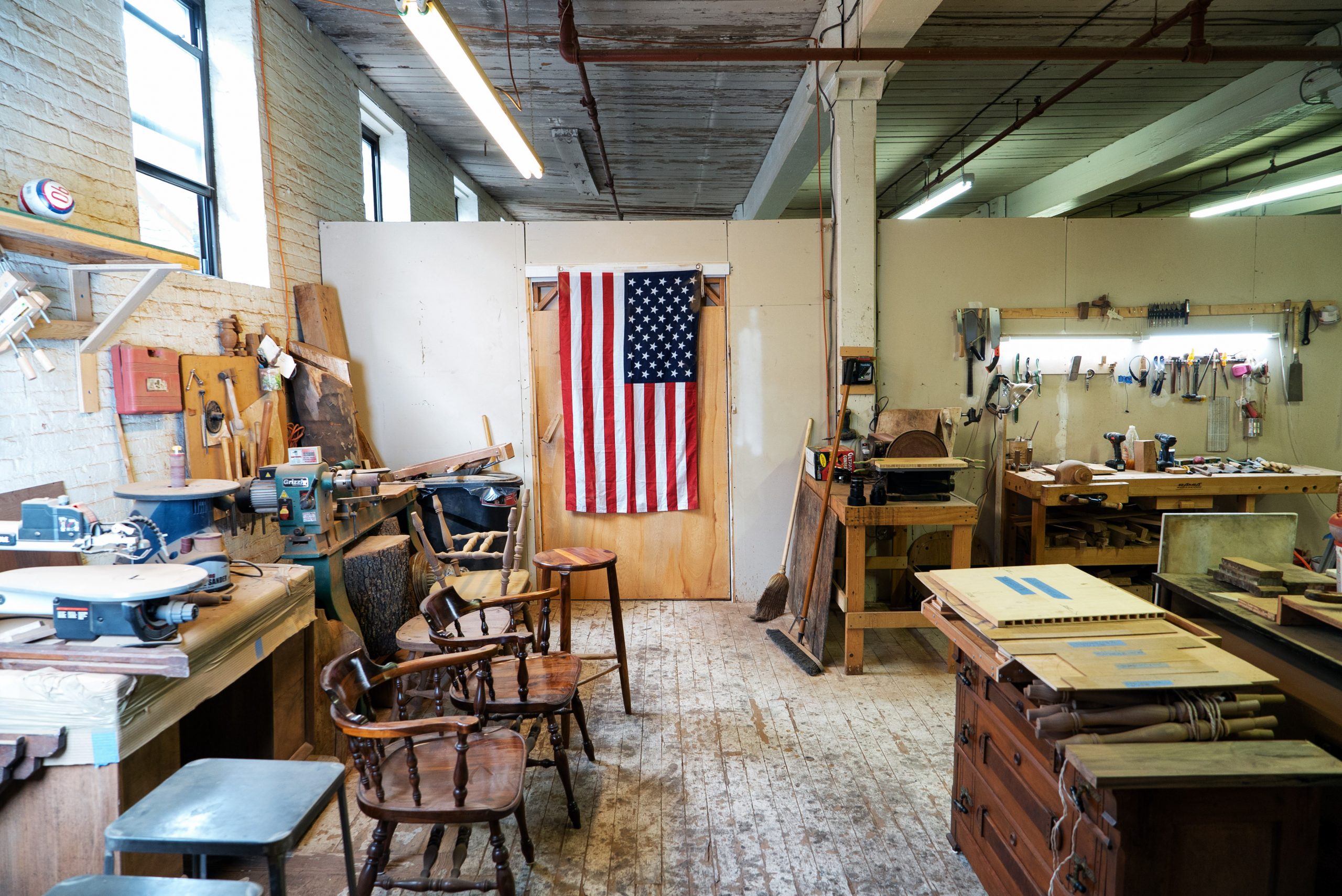
Chairs from Windsor, made in Brooklyn by Italians (photo by David Doobinin)
On the commission
The existing antique chairs were originally stained dark brown to conform to the brown wood interior architecture and moulding work throughout the club. Because we specialize in natural finishes that bring out the color and chatoyance of the unstained timber, we decided it would be awesome to do the chairs in solid American Black Walnut. Walnut has a sublime natural color that no stain can imitate. It is an exceptionally versatile and sensual species that carves, turns, glues, and finishes very nicely. To make the club’s chairs in walnut is an elevation of the design, celebrating the sophistication of a form that evolved from such humble origins, while also celebrating the club’s prestige, and demonstrating their qualities of integrity, quality, and a lasting tradition of excellence.
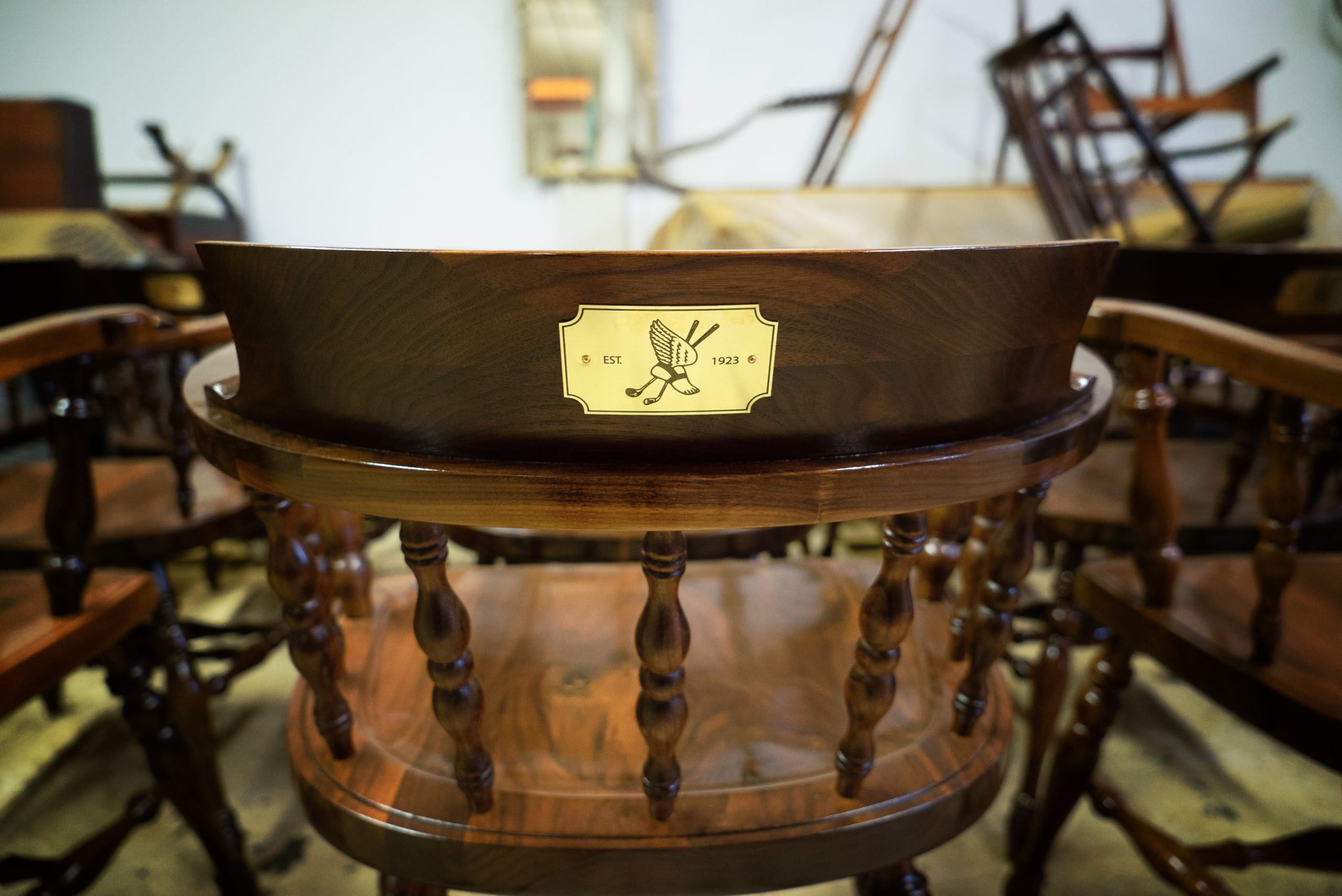

The Winged Foot Golf Club crest (photo by David Doobinin)
On the technique
We had to be extremely efficient in our approach, especially because of how much by-hand work was involved. What resulted was an approach probably not too dissimilar from pre-industrial workshops across Europe. Of course we have electrically-powered saws, planers, etc., for rough cutting and milling. But drafting work was done with compasses, squares, calipers, dividers, templates and pencils. All shaping work was done by hand with rasps, files, handsaws, spokeshaves, planes, scrapers, chisels, scratch-stocks, and all the finishing of the chairs was done with hand-rubbed linseed oil, and French-polished shellac. No one knows what synthetic finishes will do in 100 years, because they’re too new. We know exactly how linseed oil, pumice, shellac, and wax function over generations, so we choose those exclusively. You learn the most about what works by seeing what has failed.
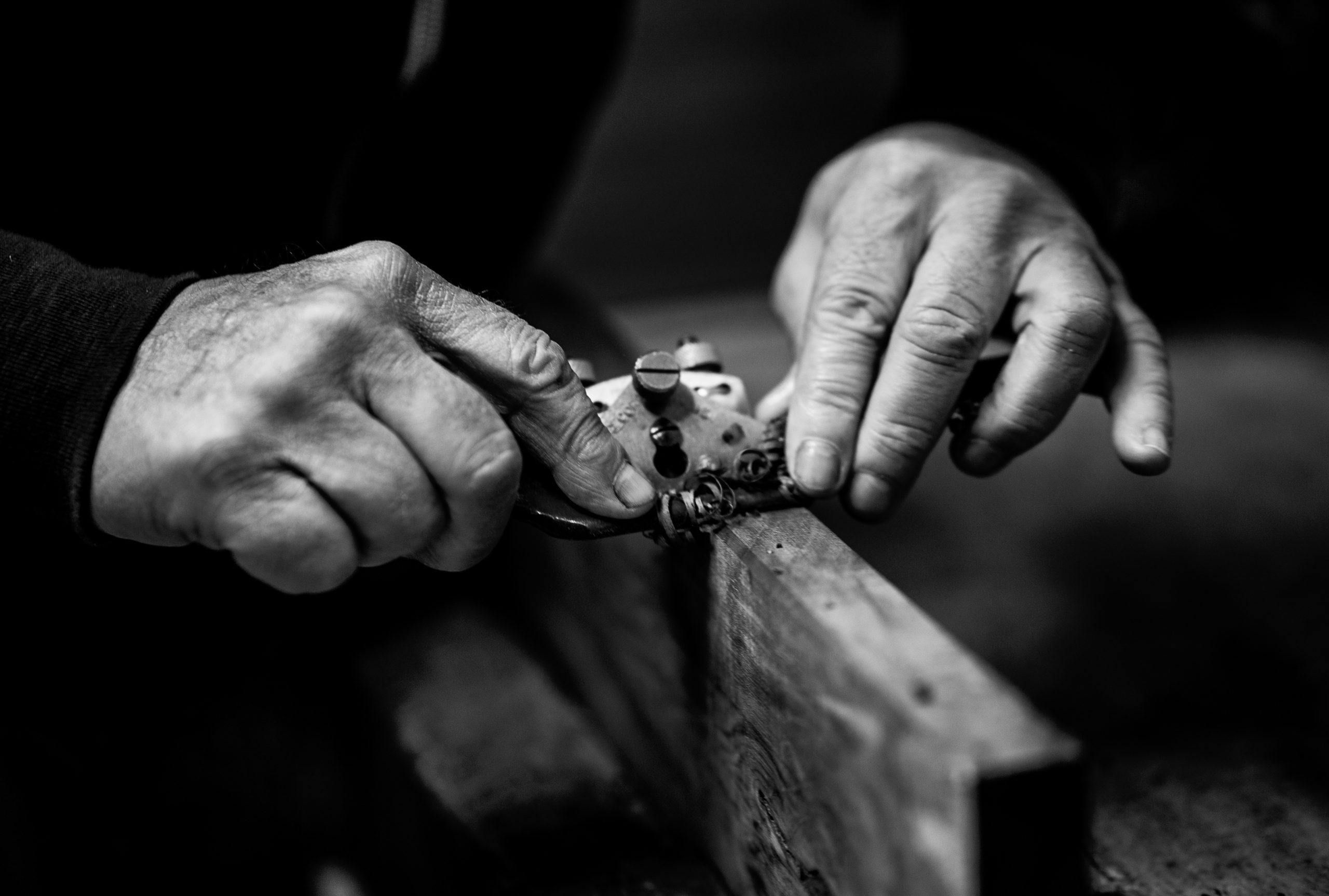

Angelo shapes an edge (photo by David Doobinin)
On what went into the chairs for the Winged Foot Golf Club
Each chair is composed of four wedged legs, thirteen spindles, a shaped and drilled seat, arm bow consisting of three joined pieces, and finally the compound-curved shaped crown (or backrest) which receives the brass plate. The most technically demanding aspects of making this chair are as follows:
Geometry: The frame will not come together if there is any deviation from the required angles. Each leg and spindle has its own rake and splay long two axises which result in the angle observed. The chair has a very tight tolerance because it is redundantly designed, meaning all angles must be accurate and come together as one—one minor error will compound and preclude assembly. When the chair is glued and cured properly, the frame should resonate as one piece when tapped with a hammer.
Crown: The scrolled crown is definitely the most demanding single part. One reason is that it is a compound curve, a curve consisting of two or more radii. There are mathematics involved in determining how to mark the blank so that both radii come out right. This means that the radius where the crown meets the arm bow is greater than the radius at the crown’s termination at the top. This makes the backrest very comfortable, and the piece quite tricky to cut, and means that unless properly planned, it yields tremendous waste. Another reason it’s so difficult is that it needs to be entirely shaped by hand.
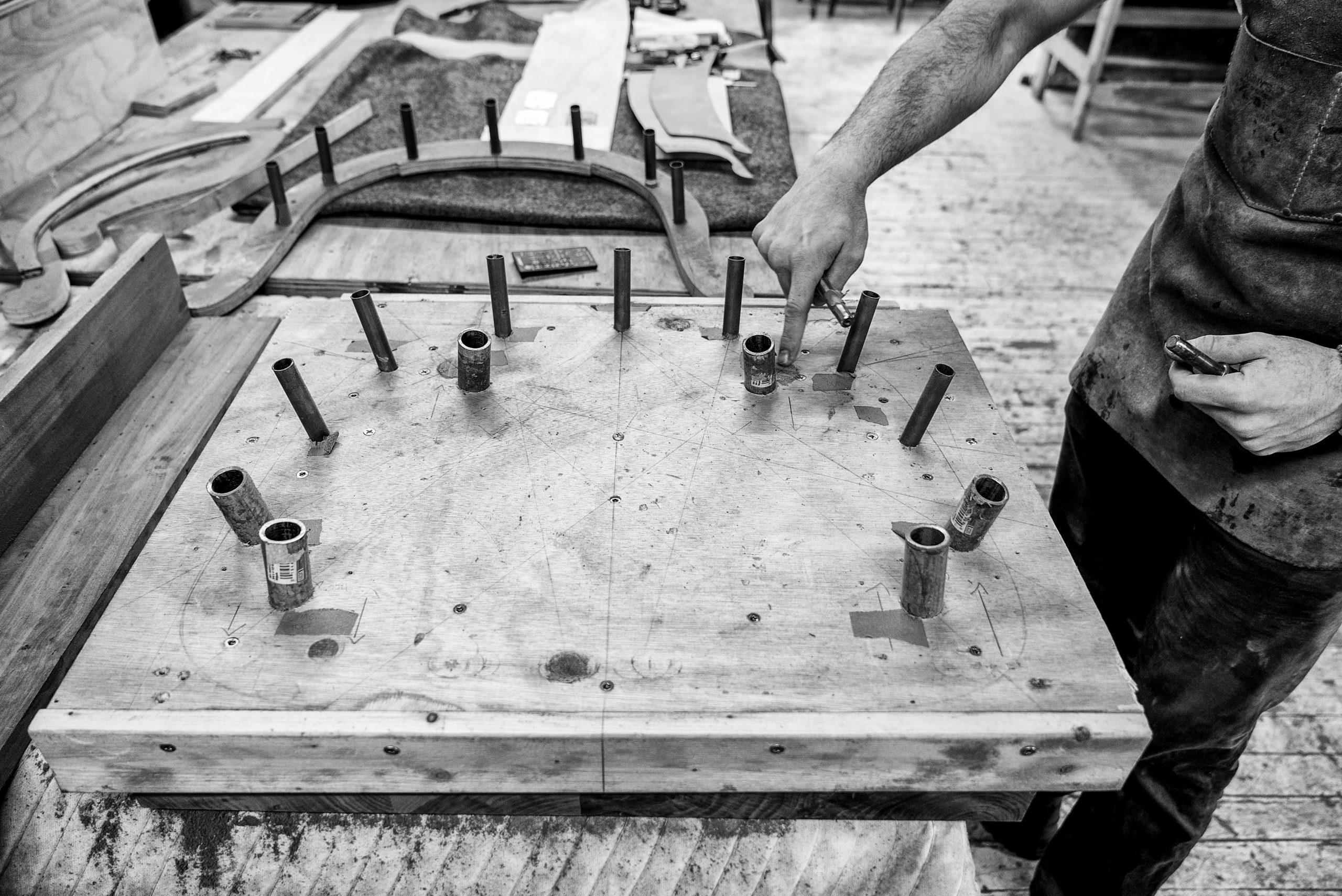

To develop the prototype the Montapertos designed and built custom templates for each part of the chair (photo by David Doobinin)
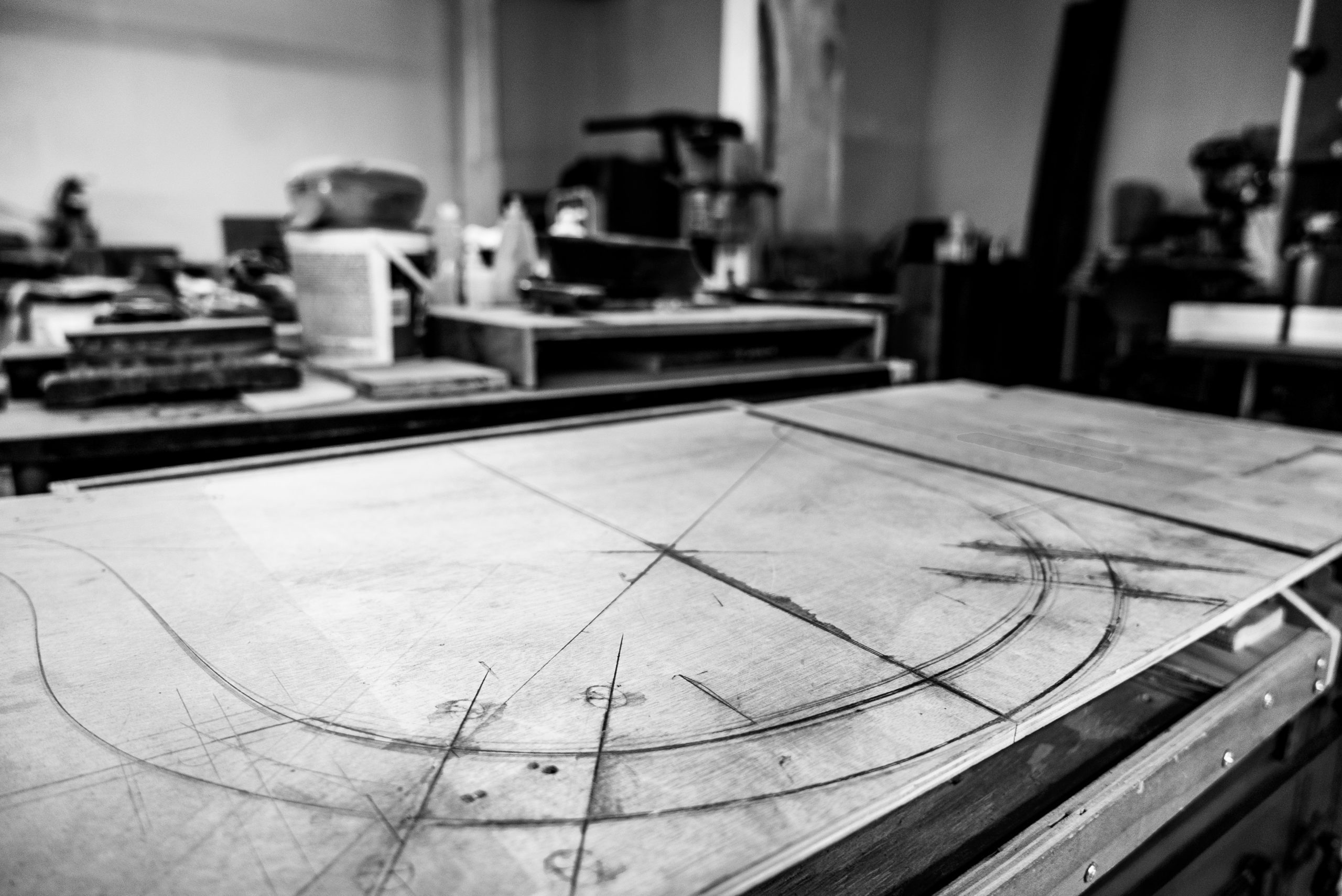

Photo by David Doobinin
The end result
We beefed up the stock, making most parts a little larger, chunkier, and more masculine—we felt that the original seats and armbows were a little bit wimpy, physically, and visually weak. All in all we made it a little more substantial and more aggressive in styling by exaggerating certain important visual moments. We felt that the original had sort of a flat treatment of the shaping, we made everything a little more sharper, more pronounced, a little more expressive and engaging. We call it “Italian Windsor.” Ha!
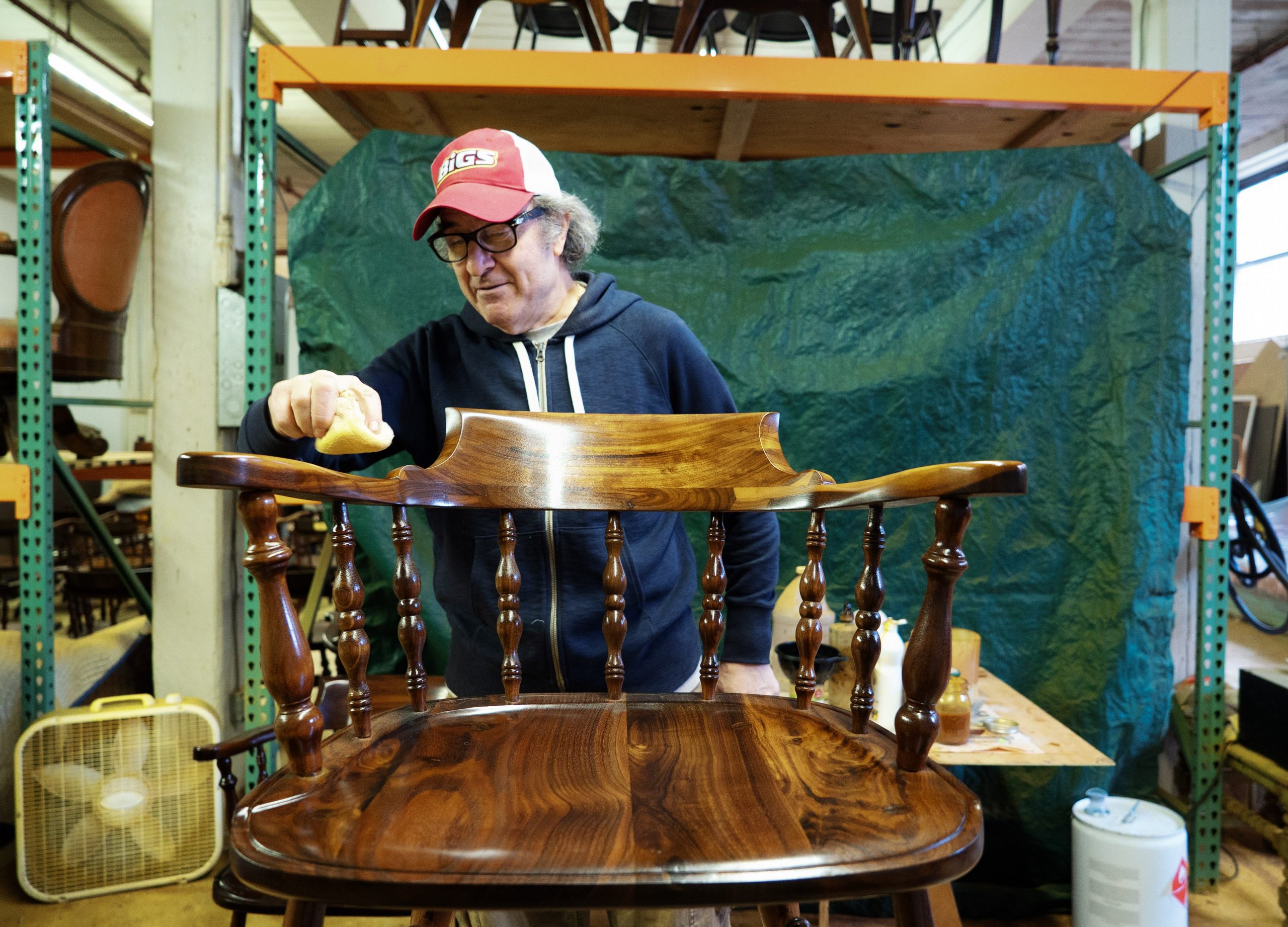

Shellacked (photo by David Doobinin)
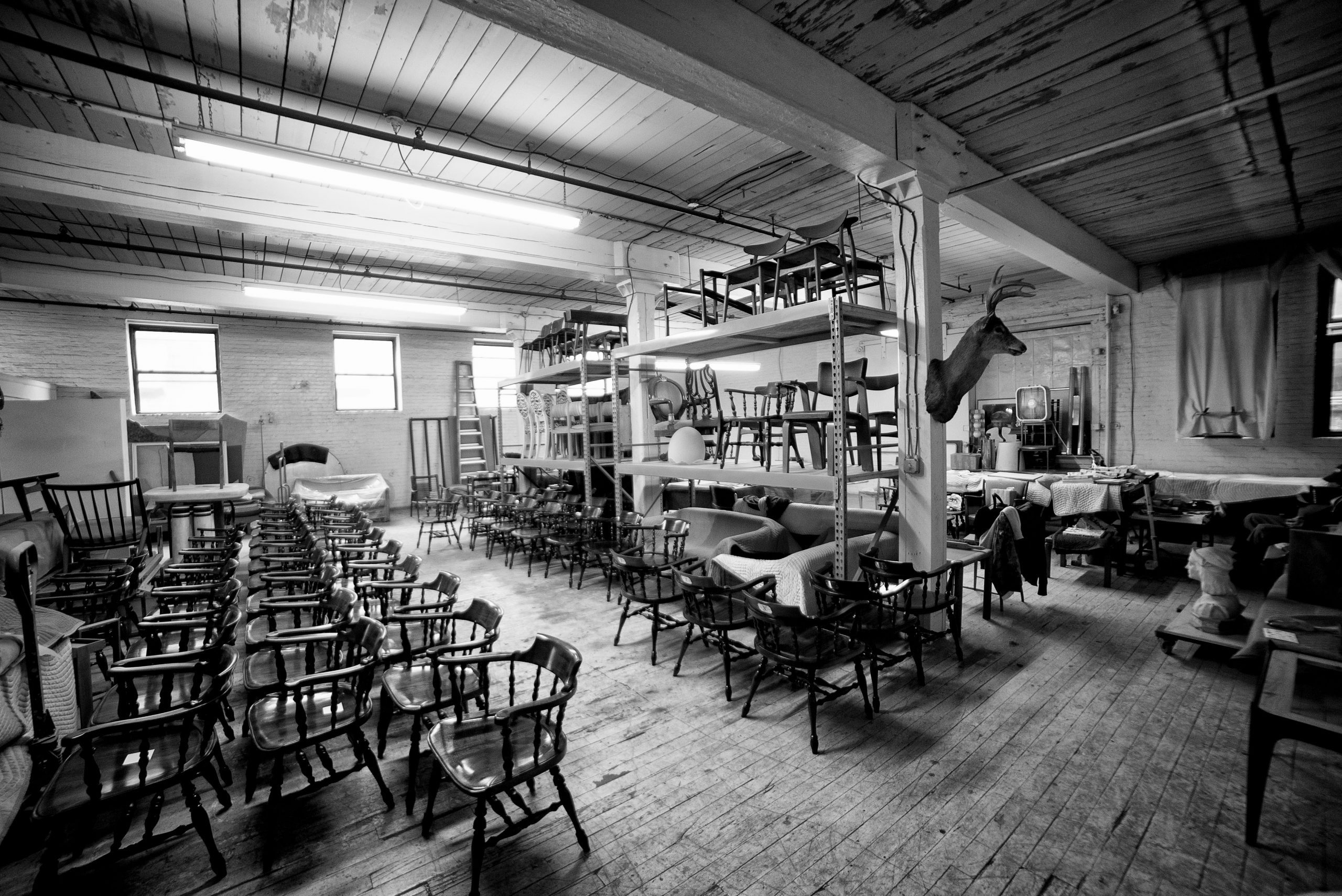

The Gowanus studio with chairs ready to ship (photo: David Doobinin)
You might also like 


















